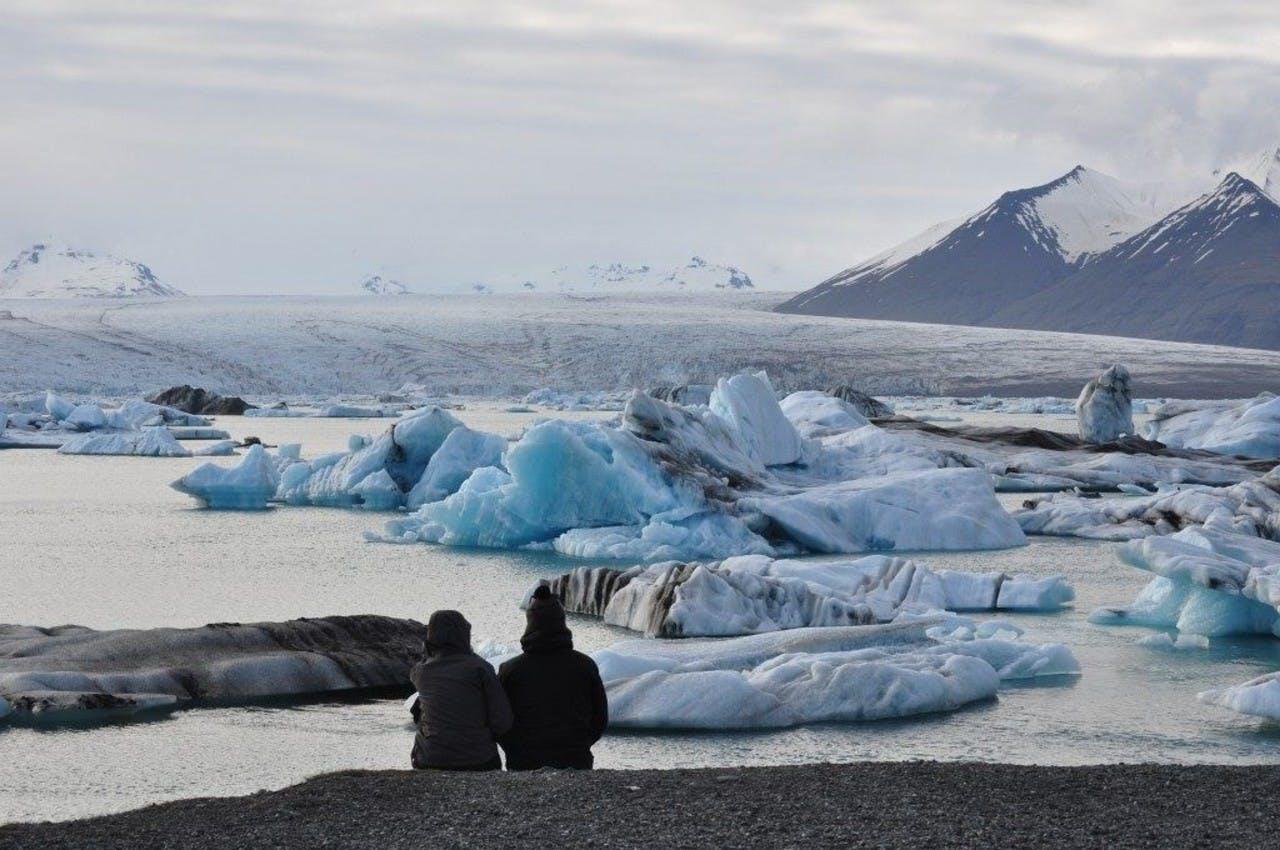The Size of Your Ice Matters in Iceland
| All
People admiring Ice bergs
Science loves to categorize and systematize everything, even big chunks (and some not-so-big chunks) of ice. The difference in definitions between particular ice formations can get confusing, particularly when you think you are walking across a glacial tongue, but find out that you are really trekking across an icecap.
In keeping with its name, Iceland is covered with ice, in some places all year long. Everywhere you go, there’s ice, some of it floating, some of it flowing, some of it melting, some of it growing. What’s the difference in all that ice?

Beautiful sunset next to snowy mountains
To simplify things, any large body of ice that lasts longer than a year is called a glacier (jökull). Take a handful of snow and squish it tight between your mittens until it hardens into an ice ball. That’s how glaciers form. Now, enlarge that ice ball to the size of a football field/soccer pitch, then to the size of a county, then to the size of a state or province… and now we need some definitions. Some glaciers are attached to other glaciers, the only difference between them being their size and placement. Size and placement determine the specific definition of an ice formation.
To begin our definitions, let’s start big, then work our way to the smaller bits.
Ice Sheet
An ice sheet is also called a continental glacier, and is the largest ice formation on Earth. Antarctica is covered by an ice sheet, as is Greenland. By definition, an ice sheet covers more than 50,000 square kilometers (19,305 square acres) of land.
Ice Cap
Ice caps are smaller, covering less than 50,000 square kilometers (19,305 square acres) of land. Vatnajökull, the largest ice formation in Iceland, is an ice cap on some maps, and is simply called a glacier on others. The same is true for Mýrdalsjökull in south Iceland, the fourth largest glacier in Iceland, and which is only a quarter the size of Vatnajökull. Ice caps are usually centered on a high point of elevation called a massif, a compact collection of mountains separated from other mountain ranges.
Glacier
These are offshoots, or large arms of ice attached to their bigger brothers and sisters. Sólheimajökull is an outlet attached to the larger Mýrdalsjökull formation, and is sometimes referred to as a “glacial tongue.”
Névé
This a newly formed glacier, and when a baby grows up to be more than a year old, it is called a firn.
Icebergs
This are the small guys who break off from the big chunks and float through the water, often out to sea. Small, however, is relative. Some icebergs are bigger than Medieval cathedrals.
Call them what you will, a big chunk of ice is just that, and to stand at the foot of a glacier—better yet to trek across one—is an exhilarating experience.
At Icelandic Mountain Guides, we offer numerous tours that take you upon and across glaciers of every size and shape. A particular favorite is our day-hike across Sólheimajökull, where you can discover the anatomy and inner workings of Iceland’s large ice formations. As a bonus, you’ll discover volcanos, waterfalls, and a gallery of ice sculptures.
Check out the tour:
Take a Walk on the Ice Side - IMG01
Keep me informed about the Icelandic Mountain Guides Blog
Outdoor adventure in Iceland is our specialty. Subscribe to our free monthly newsletter to learn when to go, what to do and where to have the best adventures in Iceland.